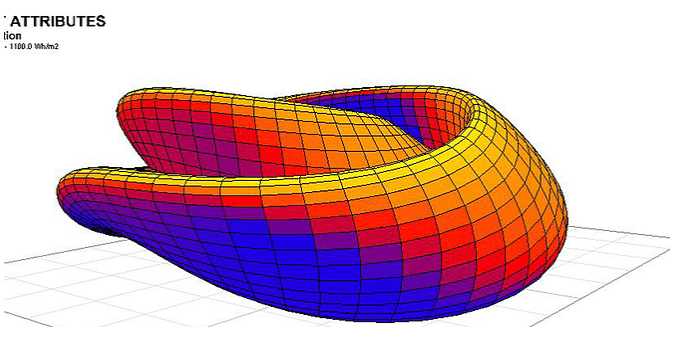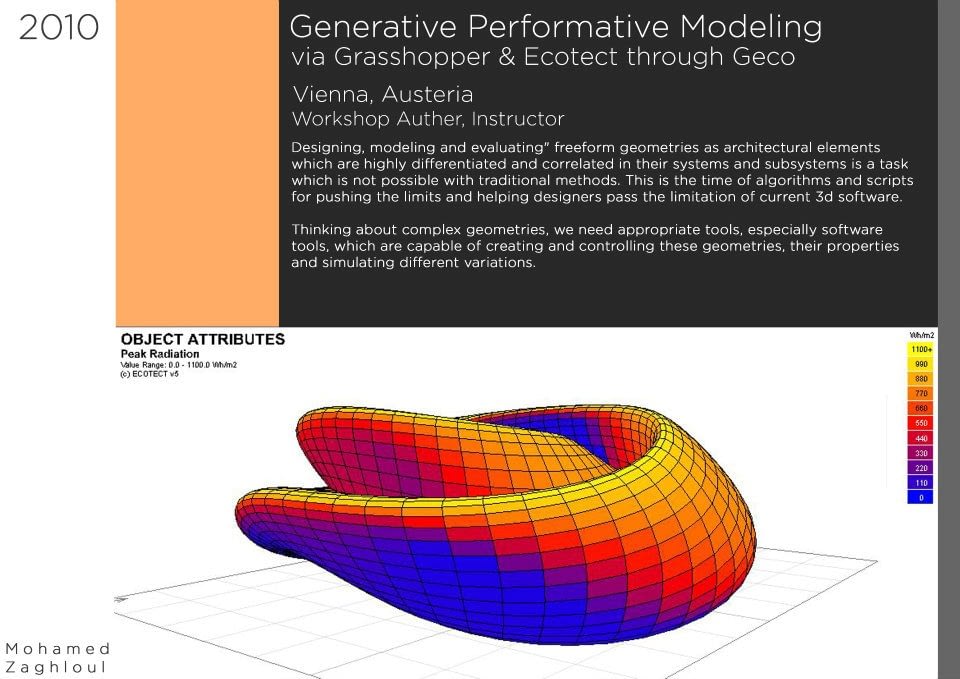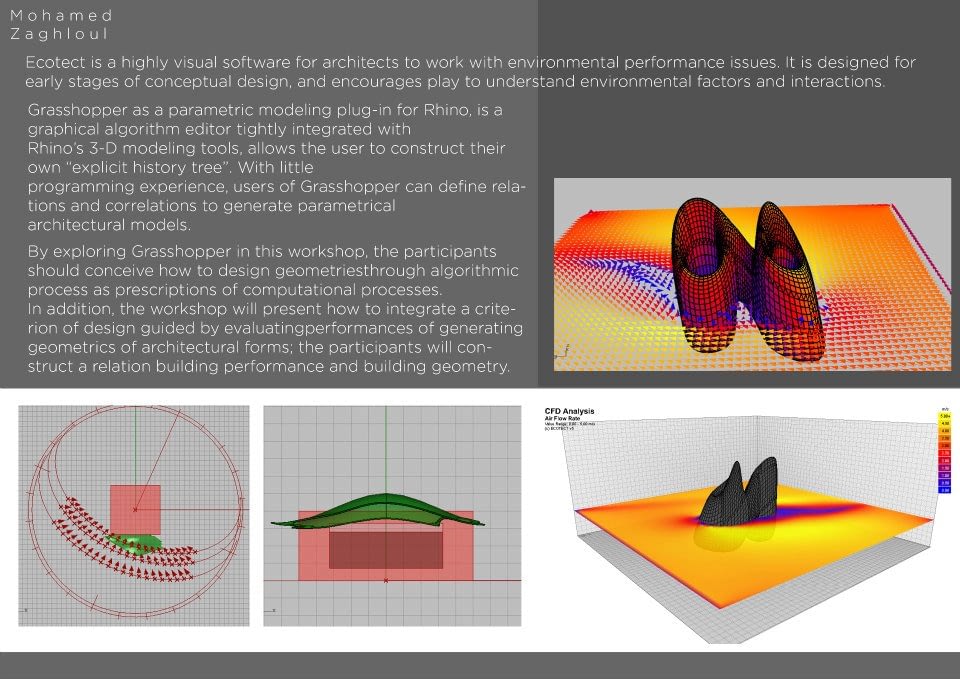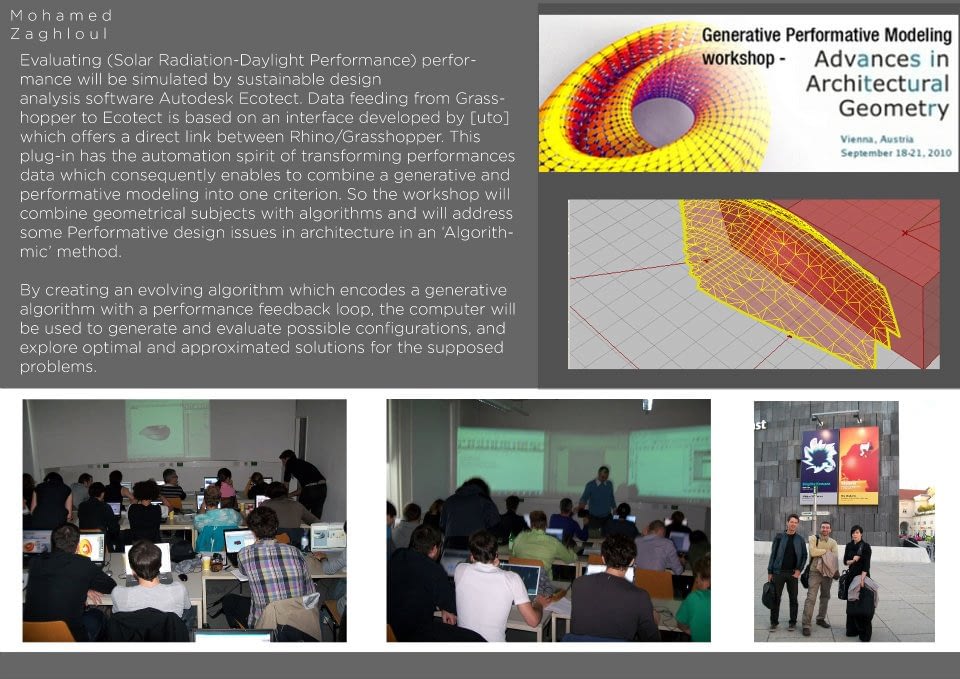Generative Performative Modeling AAG - Vienna 2010
Tutor: Mohamed Zaghloul and @ [uto]
Designing, modeling, and evaluating freeform geometries as architectural elements that are highly differentiated and correlated in their systems and subsystems is a track which is not possible with traditional methods. This is the time of algorithms and scripts for pushing the limits and helping designers pass the limitation of current 3D software.Thinking about complex geometries, we need appropriate tools, especially software tools, which are capable of creating and controlling these geometries, their properties, and simulating different variations. Ecotect is a highly visual software for architects to work with environmental performance issues. It is designed for the early stages of conceptual design and encourages play to understand environmental factors and interactions. Grasshopper as a parametric modeling plug-in for Rhino is a graphical algorithm editor tightly integrated with Rhino 3-D modeling tools, allows the user to construct their own "explicit history tree". With little programming experience, users of Grasshopper can define relations and correlations to generate parametrical architectural models. evaluating (solar radiation-daylight performance) performance will be simulated by sustainable design analysis software Autodesk Ecotect. Data feeding from Grasshopper to Ecotect is based on an interface developed by [uto] which offers a direct link between Rhino/Grasshopper. This plug-in has the automation spirit of transforming performances data which consequently enable to combine generative and performative modeling subjects with algorithms and will address some Performative design issue in architecture in an algorithmic' method.By creating an evolving algorithm that encodes a generative algorithm with a performance feedback loop, the computer will be used to generate and evaluate possible configurations, and explore optimal and approximated solutions for the supposed problems. Thinking about complex geometries, depending on appropriate tools, especially software tools, which are capable of creating and controlling these geometries, their properties and simulating different variations to integrate a criterion of design guided by evaluating performances of generating geometrics of architectural forms. The participants designed sliding window panels integrating the moire effect concerning the functional understanding to improve performance in the context of its environment.




